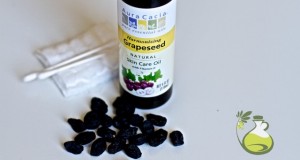
Safflower oil uses are numerous because of its endless benefits. High linoleic safflower oil is considered as healthy polyunsaturated oil with delicate flavor suitable for almost any recipe as a good oil substitute. Safflower oil is extracted from seeds of safflower plant, a natural source of linoleic acid. This essential omega-6 fat is not generated by the body and should be imported from nutrition – it is essential for the body functioning. High oleic safflower oil is derived from seeds rich in monounsaturated acids omega-9s.
Nutritional supplement
One of the most common uses for safflower oil is cooking with it. Safflower oil is used for salad dressings, sauces, marinades, baking and frying. Polyunsaturated unrefined safflower oil has a comparatively low smoke point; it is used for low-heat cooking and in a raw form. Refined oleic safflower oil smokes only at very high temperatures over 510°F, so it is the best option for frying, roasting and other high-heat cooking. It doesn’t lose its healthful properties and isn’t converted into trans fats. Read more about cooking with safflower oil.
The wide culinary uses of safflower oil are caused by its light texture, delicate flavor and numerous benefits for our health. Why is safflower oil good for us? Our bodies produce all saturated fats and cholesterol they need but cannot manufacture polyunsaturated and monounsaturated essential fatty acids in order to balance the level of total cholesterol. Thus safflower oil helps the body regulate cholesterol and prevent cardiovascular disease.
The American Journal of Clinical Nutrition states that linoleic acid present in safflower oil lowers body fat and raises lean muscle. So bodybuilders use safflower oil as a nutritional supplement to their diets.
Safflower oil is produced mainly in liquid form but it is possible to find safflower oil pills and gel capsules.
SEE ALSO: All about Sunflower Oil Benefits
Skin care
Cosmetologists value safflower oil for its benefits for skin and call safflower oil a moisturizer suitable for any type of skin, including sensitive one. Fatty acids in safflower oil hydrate and nourish the skin. They make it smooth and soft retarding the process of aging. Safflower oil easily penetrates the skin and helps recover and maintain moisture in dry skin. Safflower oil is rich in vitamin E, which antioxidant properties let widen use for safflower oil and it is included in products for skin care and massage creams. You may make massage oil at home, just mixing safflower oil with 4-5 drops of lavender oil.
RELATED: All Possible Ways to Use Sunflower Oil for Skin Care
Chinese medicine
The use of safflower oil in the Chinese medicine is traditional. It is used for treatment of several diseases. It is believed to invigorate blood, used in cases of traumatic injuries and for pain relief. Safflower oil is combined with such components as angelica and red piony and acts as the primary calmer.
Historical use
Historically safflower oil was used in oil painting. Its properties make the oil a wonderful bonding medium. Safflower oil was mixed with artist’s paints, water and solvent.
 Oilypedia.com – Benefits And Uses Of Supplemental and Essential Oils
Oilypedia.com – Benefits And Uses Of Supplemental and Essential Oils 


